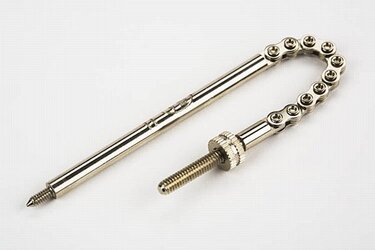To check the chain, as a bicycle chain is usually 1/2" pitch, each complete link is one inch. Hang the chain up on a nail and using a steel ruler, measure the length of 12 complete links and it should be exactly 12 inches. In reality, it will have some wear after all this time.The general advice is if the 12 links measure 12 1/16" or less, it's fine, anything up to 12 1/8" you will probably get away with it and anything over that will have damaged the sprockets. This all causes issues with derailleur gears but not necessarily with hub gears. You can read all about chains here -
http://sheldonbrown.com/chains.html (I disagree with Sheldon on one point, the older type chains like you will have lasted longer than the bushingless type used today) If you are re-using the original sprocket, I would just use the original chain anyway as a new chain mightn't mesh with the sprocket if it's worn. If you want to use a new sprocket (and there are advantages to using a larger sprocket on these bikes if you live in a hilly area), it's probably best to replace the chain unless it measures more than 12 1/8" over the 12 links. BTW, so long as your bike is post war, Sturmey sprockets are cheap and easy to change. Pre-war, they thread on and can be difficult to unscrew.
Incidently, it's not that difficult to replace a chain in a chaincase. Remove all the covers, get someone to hold the back of the bike up in the air and drop the chain down the hole at the top. Put it on the chainwheel, rotate crank until it's wrapped round the chainwheel and then stand the bike on the ground again and use a spoke or some other thin bit of wire with a small hook to hook it and pull it through to the back again.
When you disconnect the gear cable at the hub end where it attaches to the small chain (toggle chain) which feeds into the hub through the axle, this piece of small chain will turn and unscrew. There will a bit of solid bar with threads on the end attached to the end of the small chain. This bar is the indicator rod and correct adjustment of an SA hub involves looking through the hole in the nut and ensuring the end of the rod is level with the end of the axle when the gear selector is in the Normal or 2nd gear position. Different lengths were used but there are other ways of getting correct gear adjustment if you have the wrong length (see Sheldon Brown).
This is an indicator rod with toggle chain attached.


